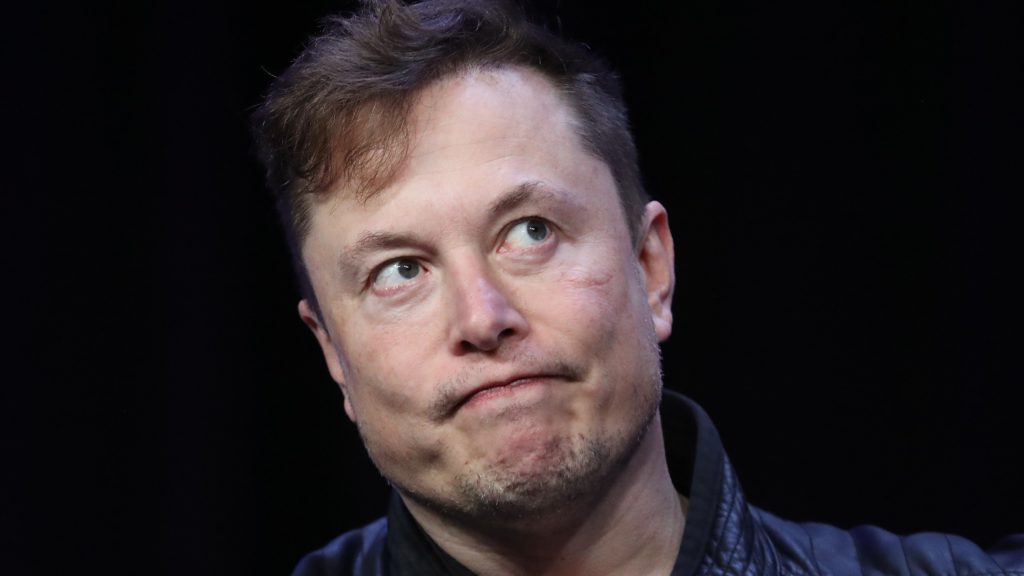(Bloomberg) —
At some point, Elon Musk is going to blog again.
Four months have passed since the chief executive officer of Tesla tweeted he was working on a third “master plan” for the electric-car maker. Parts one and two were playful, endearing and hugely effective in burnishing Musk’s reputation as a visionary, ginning up excitement among investors and prospective hires. Who wouldn’t want to do good for the world by making a difference in global carbon emissions? Does ambition get any bigger than disrupting every major form of terrestrial transport?
Before Musk hits publish on another blog post, though, it’s worth taking another look at Master Plan Part Deux, released six years ago this month. Tesla has made incredible strides since 2016, becoming the world’s most valuable car company by a wide margin. But it’s also fallen short or completely whiffed on each of the four goals its CEO listed.
Let’s break them down, one by one:
Integrating energy generation and storage
It was no wonder this came first on Tesla’s list of plans six years ago. A month before part deux was published, the company announced it had offered to acquire SolarCity, the debt-laden panel installer run by two of Musk’s cousins, for $2.86 billion. The CEO was under pressure to justify what some investors believed amounted to a bailout.
Musk wrote that Tesla would “create a smoothly integrated and beautiful solar-roof-with-battery product that just works,” and “scale that throughout the world.” He said this wouldn’t be feasible if Tesla and SolarCity were two different companies.
Tesla just reported its best quarter for solar deployment in more than four years, but the solar roof product Musk touted to help close the SolarCity deal has been plagued by manufacturing and installation difficulties. He’s fired executives who led the effort, raised prices and even said in a deposition that it probably would have been better to let SolarCity execute on its own.
Covering all major forms of transportation
Musk made it Tesla’s mission to bring a new compact SUV, semi truck, pickup and bus to market. The first of those products was a nod to the Model Y, which has been a runaway hit. The Semi and Cybertruck — prototypes of which debuted in 2017 and 2019 — are years behind schedule, and there’s been no sign of a bus.
When Musk opened Tesla’s factory in Austin, Texas, in April, he said the Cybertruck and Semi will be in production next year. He put a finer point on when it might be ready during last week’s earnings call, saying the company hopes to start deliveries in mid-2023.
Autonomy
Musk’s third goal was perhaps his most famous and now controversial: fully self-driving vehicles.
He wrote that all Teslas would have the hardware necessary to navigate streets on their own. The company ended up changing the computers in its cars, requiring retrofits that Musk said would be free, then charged $1,500, then dropped the price to $1,000. Last year, Tesla pivoted away from using radar, five years after its CEO said such sensors may have prevented a fatal crash.
More than 100,000 drivers now have access to Full Self-Driving, a system that’s still in beta and still requires fully attentive drivers to keep their hands on the wheel. On Tuesday, the US National Highway Traffic Safety Administration added a 39th incident involving a Tesla vehicle suspected to be using the company’s driver-assistance systems to a broader special crash investigation. The agency is also conducting two other probes into whether Tesla’s Autopilot is defective.
Sharing
The final objective was an add-on to the full autonomy concept. Musk wrote that Tesla owners would be able to add their cars to a shared fleet that would dramatically lower the cost of owning the company’s vehicles.
Tesla not only lacks the robotaxis for a shared network, it lacks a network. Musk’s plan was perceived as a potential threat to Uber and Lyft, and indeed Musk said years later that Tesla would compete against those two companies. But in a twist of fate that worked out well for Tesla’s market value, the automaker landed a huge order from Hertz last year, and half of the 100,000 vehicles purchased will be rented to Uber drivers.
Owners still can’t summon their Tesla from “pretty much anywhere,” in Musk’s words, without risking their car running into things. There’s no way to earn income from a Tesla sharing app that offsets or exceeds monthly car payments. And the cost of Teslas keeps rising: Musk said during last week’s earnings call that prices are “frankly at embarrassing levels,” and that he’d like to lower them as supply shocks and inflation ease.
Will Musk take over Twitter, eventually? Which of the S&P 500’s biggest stocks has the most upside? Share your views in this week’s MLIV Pulse survey. It takes only one minute and is anonymous.
For the most part, Musk didn’t give a time frame for all he wanted to pull off in his last master plan. Tesla may still execute some of what he laid out, and it deserves plenty of credit for forcing other automakers, entrepreneurs and investors to take electric vehicles seriously.
But before readers of Musk’s next plan get their hopes up about all he intends to achieve, this track record suggests cautious optimism is warranted.
More stories like this are available on bloomberg.com
©2022 Bloomberg L.P.











